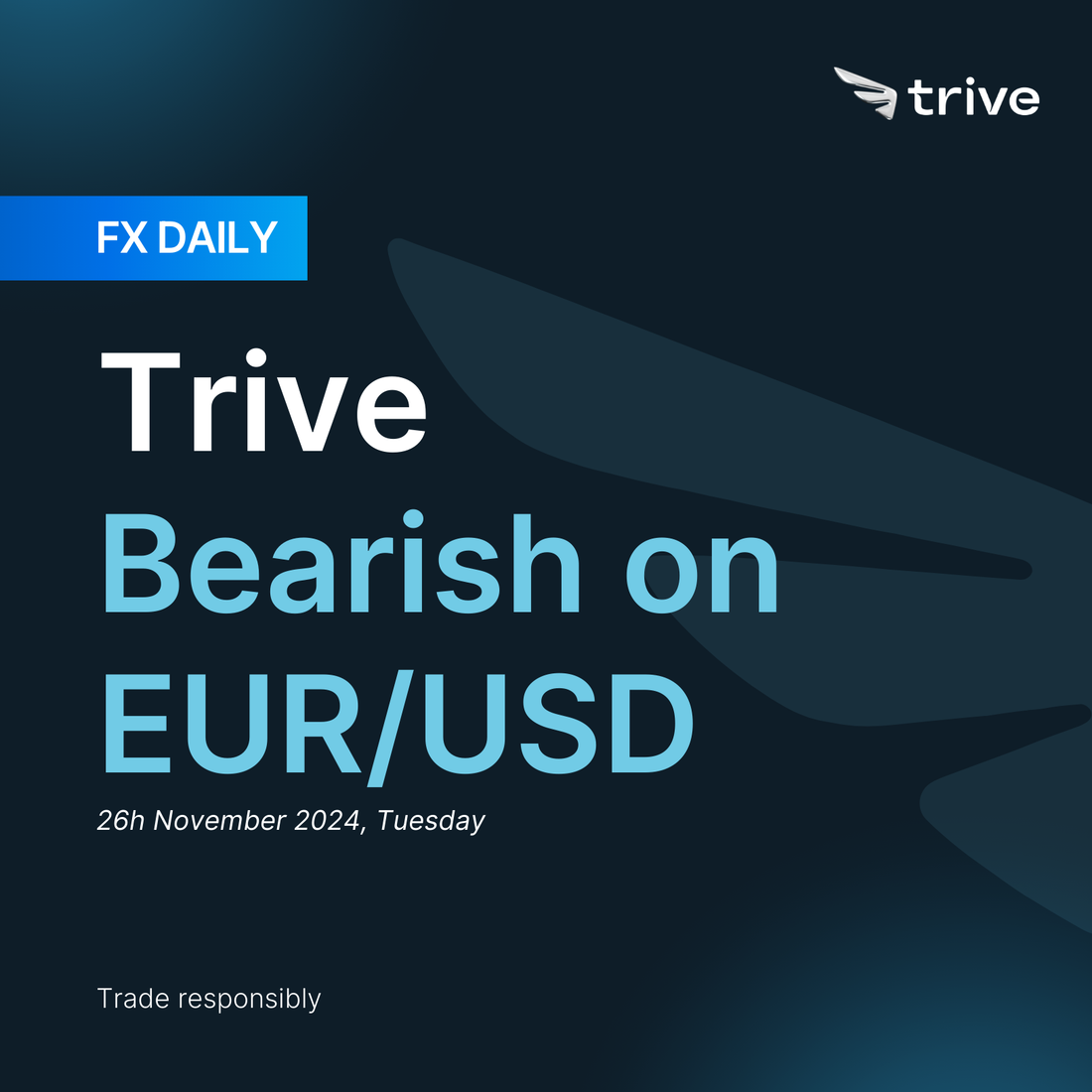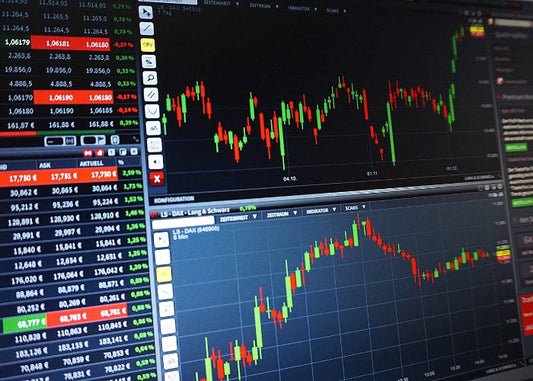FX Daily: Trive Bearish on EUR/USD

A second Trump term may strengthen the USD and weaken the EUR, especially with a Republican Congress. Proposed tariffs, supply chain restrictions, and potential tax cuts would drive dollar gains and boost U.S. inflation, while pressuring EUR/USD toward parity by 2025. This scenario could force the ECB to cut rates to support eurozone growth.
EUR: Under pressures
The EUR remains under significant bearish pressure, driven by weak economic data, dovish ECB rhetoric, and heightened external risks. The latest eurozone PMI data paints a grim picture of the region’s economic health, with indicators pointing toward a renewed risk of recession. Market expectations have shifted accordingly, pricing in faster ECB rate cuts, with a 50bps reduction now considered for the December meeting. The rate market has also priced in 150bps of cuts by October 2025, far exceeding expectations for the Federal Reserve, highlighting the policy divergence weighing on the EUR.
ECB officials have consistently struck a dovish tone. François Villeroy de Galhau, often seen as a centrist, emphasized that risks to inflation and growth are "shifting to the downside," supporting the view for further monetary easing. He downplayed recent strong wage growth data as backward-looking, aligning with the ECB's assessment that wage pressures will ease next year. Meanwhile, the ECB’s Financial Stability Report revealed growing concerns over economic growth rather than inflation, further justifying the dovish outlook.
External risks add to the euro’s challenges. The election of Donald Trump and his anticipated trade policies pose a significant threat to the eurozone, especially if aggressive tariffs on EU goods materialize. Such tariffs could exacerbate the region’s economic struggles, undermining ECB efforts to stabilize the economy. Additionally, the euro remains vulnerable to geopolitical risks, including the ongoing Ukraine conflict, which dampens investor sentiment toward Europe.
Political instability in France exacerbates the bearish outlook. Challenges in passing the national budget raise the risk of fiscal deficits exceeding targets, while a potential government collapse could lead to early elections. Such developments heighten uncertainty, pressuring the EUR further. The growing OAT/Bund spread, now nearing 80 basis points, signals rising concerns about eurozone fiscal health and adds to the negative momentum in EUR/USD, increasing the risk of parity.
Although stronger wage growth and a weaker euro could fuel inflationary pressures, providing potential upside risks in the medium term, the ECB’s focus on growth concerns limits these factors' influence. Near-term focus will remain on key eurozone data, including the flash HICP estimate and German Ifo index, where stabilization could offer temporary relief. However, dovish ECB signals, weak economic fundamentals, and heightened external risks keep the EUR under significant bearish pressure.
USD: ‘Trump Trades’ and New Treasury Secretary
The “Trump Trades” are expected to remain a key driver of near-term market sentiment and USD performance. Market attention is focused on President-elect Trump’s cabinet appointments, particularly pivotal roles like the Treasury Secretary and Trade Representative. Over the weekend, Trump nominated Scott Bessent as Secretary of the Treasury. While Bessent is reportedly a supporter of tariffs, his stance appears less aggressive than Trump’s desired levels and pace. However, as a key pick in Trump’s administration, Bessent may align more closely with the President-elect’s policies. Consequently, expectations are rising that heavy tariffs and tax cut will likely come into effect next year, which could provide medium-term support for the USD.
Beyond politics, recent Fed commentary has provided additional support for the USD. Fed officials have expressed cautious optimism, citing steady progress in cooling inflation and a balanced labor market. Most believe monetary policy remains restrictive and that future rate cuts should proceed gradually as inflation moves toward the 2% target. However, the Fed remains data-dependent, emphasizing the need for flexibility amid risks such as inflation shocks, uneven disinflation, and uncertainties around the neutral rate. Economic resilience continues to strengthen this narrative. The S&P Global Manufacturing Flash PMI ticked up to 48.8 from 48.5, while the Services PMI surged to 57.0, marking its sharpest expansion since March 2022. These better-than-expected figures highlight the robust performance of the U.S. economy, further supporting the USD.
Looking ahead, the market focus will shift to the U.S. Q3 GDP data and the October PCE report, the Fed’s preferred measure of inflation. Chair Powell recently remarked, “The economy is not sending signals that we need to be in a hurry to lower rates, with the strength of the economy allowing the FOMC to approach our decisions carefully.” Should the PCE data reveal persistent inflationary pressures, markets may further reduce expectations for a December rate cut, lending additional strength to the USD. Conversely, softer PCE data could support a 25bps cut in December, though this outcome is largely priced in and unlikely to significantly dent USD strength, given prevailing market expectations. In summary, U.S. politics and recent geopolitical events likely remain the primary driver of USD movements, with macroeconomic developments playing a secondary but still significant role. For now, market sentiment hinges on the interplay of political decisions, upcoming economic data.

EUR/USD 4H Chart
Disclaimer
This material is provided for informational purposes only and does not constitute financial, investment, or other advice. The opinions expressed in this material are those of the author and do not necessarily reflect the views of Trive International. No opinion contained in this material constitutes a recommendation by Trive International or its author regarding any particular investment, transaction, or investment strategy. This material should not be relied upon in making any investment decision.
The information provided does not consider the individual investment objectives, financial situation, or needs of any specific investor. Investors should seek independent financial advice tailored to their individual circumstances before making any investment decisions. Trive International shall not be liable for any loss, damage, or injury arising directly or indirectly from the use of this information or from any action or decision taken as a result of using this material.
Trive International may or may not have a financial interest in the companies or securities mentioned. The value of investments may fluctuate, and investors may not get back the amount they originally invested. Past performance is not indicative of future results.
For more information about Trive International, please visit http://trive.com/int
Additional Information
Investing involves risk, including the potential loss of principal. Diversification and asset allocation strategies do not ensure a profit or guarantee against loss. The content in this material is subject to change without notice and may become outdated or inaccurate over time. Trive International does not undertake any obligation to update the information in this material.
By accessing this material, you acknowledge and agree to the terms of this disclaimer. If you do not agree with these terms, please refrain from using this information.
No comments
Home
Trive
TriveHub





0 comments